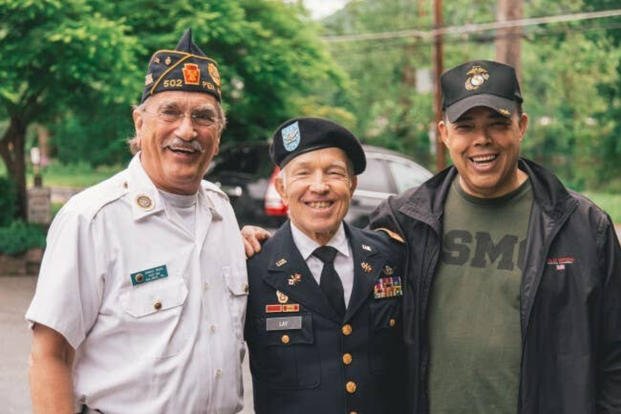The Bureau of Labor Statistics reports approximately 18.8 million veterans live in the United States. The veteran population accounts for almost 8% of the total noninstitutionalized population of men and women over the age of 18. There are significant efforts within both the government and private sector to find ways to better reintegrate veterans back into the workforce.
For example, the marketing firm Edelmen looked at the overall "Well Being" of the veteran population and proposed several ways government and private-sector employers may better support the veteran community. In the 2018 survey, Edelmen found that the veteran population has some difficulty in finding desirable employment when first separating from the military, with those in the post 9-11 group having the most trouble.
Government studies, as well as private-sector research, indicate that employers are suggesting that in many instances, veterans lack specific skills, experience and education, but is this mainly caused by a lack of a clear understanding of what veterans bring to an organization, compounded by an overall lack of knowledge of the military and how military experience translates into the private sector? This confusion leads to a situation where employers significantly underestimate the capabilities, skills and abilities of the veteran population.
The lack of clarity on what the veteran is capable of is amplified in areas where there is no clear crosswalk of qualifications and certifications between the military job and the private-sector job. One possible solution to this issue would be for employers to offer internships and apprenticeships that provide an opportunity for the veteran to obtain required certifications.
Another problem that continues to be the "long pole in the tent" is the divide between military culture and its private-sector partners. Organizations mostly understand the overall intrinsic value of hiring veterans and are striving to be "military friendly" but cannot create a "veteran-informed" culture without significant effort.
Creating a military-informed culture requires a three-step process:
Step 1: Understand What Veterans Bring to the Table, the ROI
- Vets seek responsibility and take responsibility for the mission.
- Vets are team players.
- Vets typically are self-confident and realistic.
- Vets generally are very organized and disciplined.
- Vets usually have a solid work ethic.
- Vets are known to be adaptive and creative problem solvers.
- Vets have a "mission first, people always" attitude.
- Vets are traditionally adept at performing under difficult or stressful circumstances.
- Vets are usually cross-trained in a variety of functional skills.
- Vets are known to be adaptive and creative problem solvers.
Step 2: Close the Understanding Gap
- Consider developing a training program for your organization that covers military-related issues. Consider using resources like the Veterans Employment Toolkit to guide your training.
- Consider helping to ease the transition into your corporate culture by providing training for veterans on the similarities and differences between their prior military culture and your corporate culture.
- Consider helping veterans better understand the differences between leadership and professional development in the civilian workplace and that of the military. Capitalize on veterans in your organization who have made a successful transition to train those that come after.
Step 3: Get the Most Out of Your Veteran Workforce
- Be an organization of values; veterans are leaving a culture that emphasizes "The Why" over "The What." Show them the why in all things. It's valuable to have a mission, but a mission without a clear purpose rarely leads to success.
- Encourage integration and socialization; most veterans are coming from a culture in which "the team" is a highly regarded concept, and individuals on a team take care of each other. Veterans will probably be looking for some mechanism to plug into the organization and find a connection to other members of the team.
- Provide a "buddy" to mentor the veteran in the intricacies of the organizational culture and procedures. The military typically has a formalized process for almost everything, so depending on the individual veteran, they may need help in understanding the organization's systems (or lack of formalized ones).
- Don't try to manage a veteran; lead them. The military culture places value on leading by example, and those who serve are more likely to hold those in charge more responsible and to a higher expectation. In military culture, effective leadership is a must, and most veterans bring this expectation with them into civilian life.
- Communicate clearly and provide context. Those who served in the armed forces are most likely used to receiving instructions in some sort of clear, concise way. Veterans may have a slightly different "intensity"; they may react too fast, if not presented clear expectations.
- Be open and honest; most veterans are used to being provided with ongoing feedback (usually in a somewhat direct manner). Veterans will be looking for you to be engaged and for you to be providing them with checkpoints that help them gauge not only performance but assimilation into the new culture. In most cases, veterans will value autonomy to "complete the mission" once they understand what is required.
In terms of a "one-stop shop" for all things veteran and veteran support, there is no better place to go than the Department of Veterans Affairs.
The Society for Human Resource Management also provides excellent resources on how to create a culture that supports veterans.
Find the Right Veteran Job
Whether you want to polish your resume, find veteran job fairs in your area or connect with employers looking to hire veterans, Military.com can help. Subscribe to Military.com to have job postings, guides and advice, and more delivered directly to your inbox.















